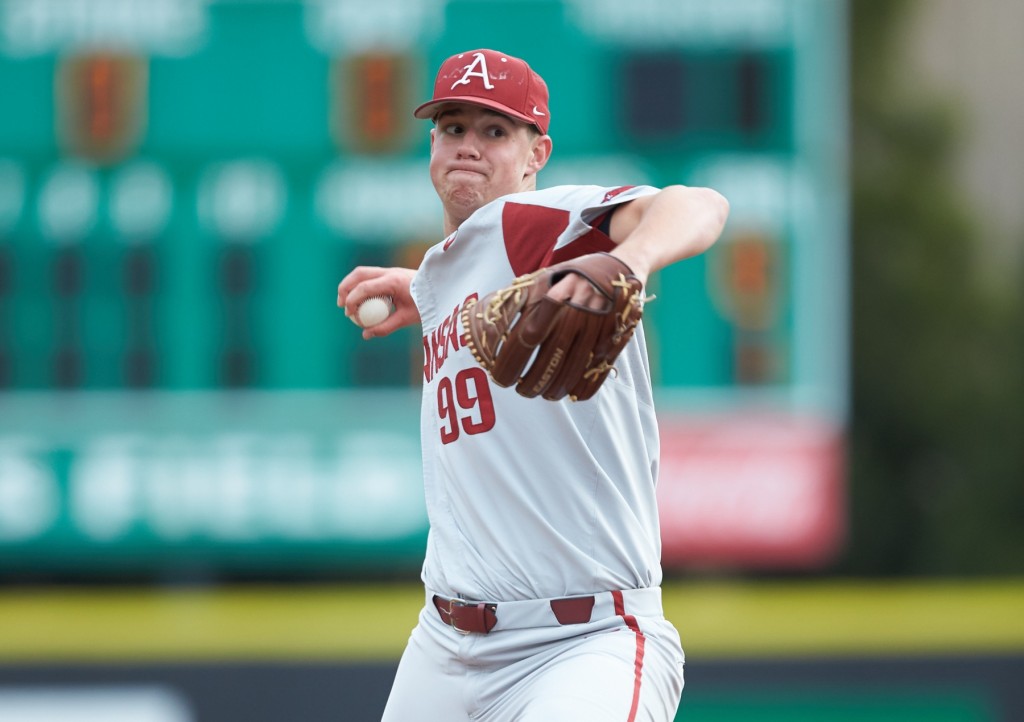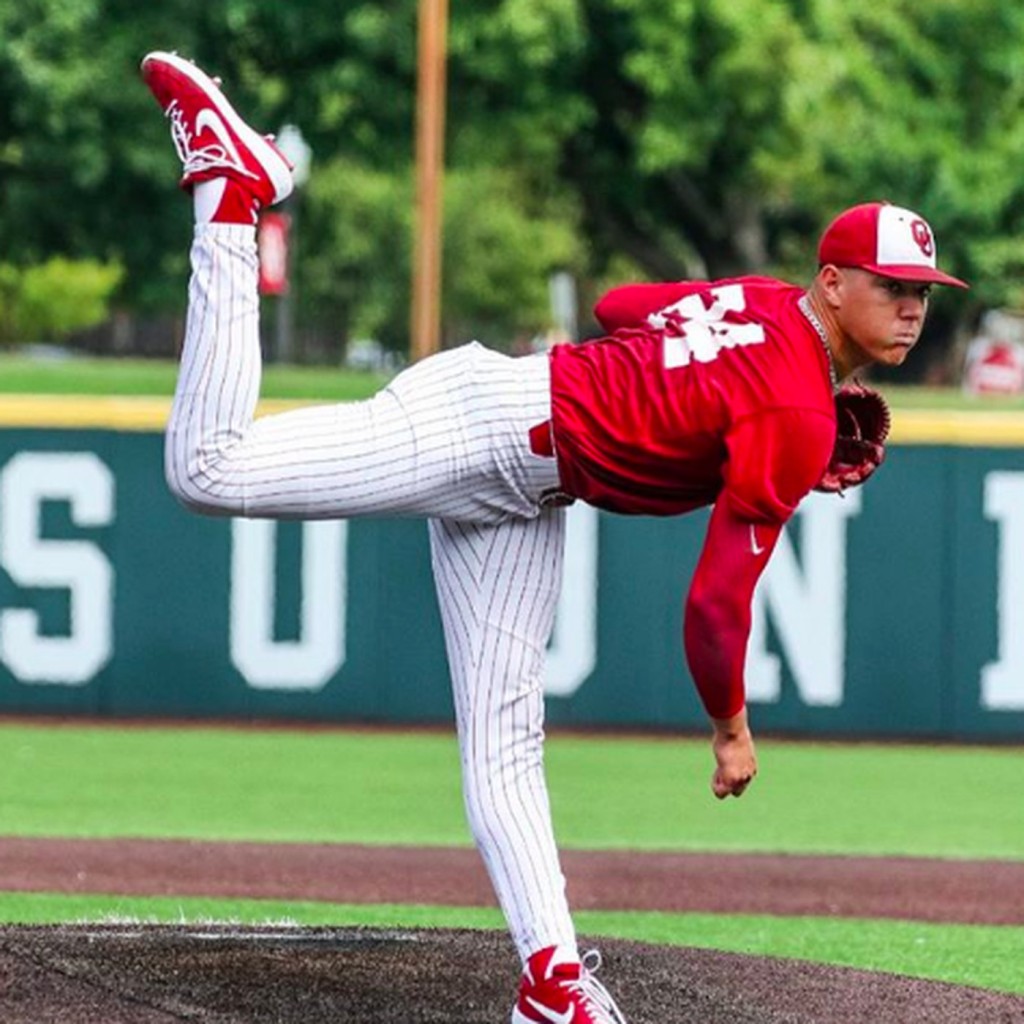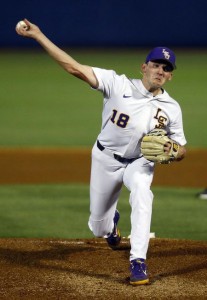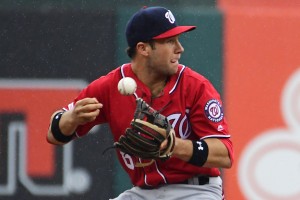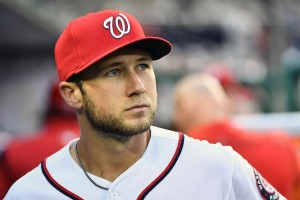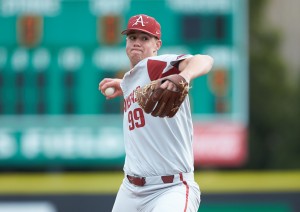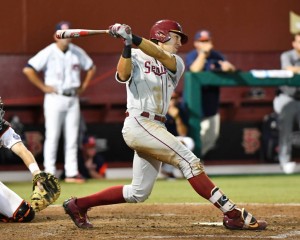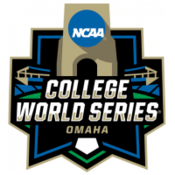
Our CWS coverage for 2019 got a little compressed due to time this year. We didn’t announce the full field (link to d1baseball’s 64-field announcement), and we’re combining a couple different posts this year upon the completion of Regionals.
Now we’re through the Regionals and the field has been winnowed from 64 to just 16.
Regional Recaps
We’ll review the 16 regionals in order of the larger bracket. Bold is the host/seed and Bolded Red is the winner.
1. UCLA region finish: UCLA, the top seed in the tourney, survived a scare by sweeping Loyola Marymount out of the losers’ bracket to advance. Seed finish: 1-3-2-4
16. Oregon State region finish: Michigan outlasted Creighton in this upset-filled regional. Host Oregon State, your defending National champ, was 2-and-out, robbing a national stage for its presumed #1 overall pick Adley Rutschman. Seed finish: 3-2-4-1
2. Vanderbilt region finish: Vanderbilt cruised to the title in this chalk regional. Seed finish: chalk 1-2-3-4
15. West Virginia region finish: #3 seed Duke got to WVU’s top pick Alex Manoah in the winner’s bracket game and WVU couldn’t recover. Seed finish: 3-2-1-4
3. Georgia Tech region finish: Auburn takes two close ones to beat the host and 3rd overall seed. Seed finish: 2-1-3-4
14. UNC region finish: UNC topped all three teams en route to the title in a “familiar” regional of teams who play frequently. Seed finish: chalk 1-2-3-4.
4. Georgia region finish: Florida State advances as a #3 regional seed, battering the field by winnings its 3 games 13-7, 12-3, 10-1. Seed finish: 3-1-2-4.
13. LSU region finish: LSU held serve and advances. Seed finish: 1-3-2-4
5. Arkansas region finish: Arkansas cruises undefeated to the win. Last-team-in TCU makes the regional final to prove critics wrong. Seed finish: 1-3-4-2
12. Ole Miss region finish: Ole Miss fends off the feisty 4th seeded Jacksonville State to advance. Overseeded Illinois goes 2-and-out. Seed finish: 1-4-3-2.
6. Mississippi State region finish: Mississippi State takes out Miami, who came out of the loser’s bracket to challenge. Seed finish chalk 1-2-3-4.
11. Stanford region finish: Stanford came out of the losers bracket to outlast upstart Fresno State in a monday finish. Seed finish: 1-3-4-2
7. Louisville region finish: Louisville came through the loser’s bracket to advance. This regional marred by a ridiculous “ump show” where the Louisville closer got ejected for saying “that’s horrible” after a close call. 4-game suspension. For saying two words, basically to himself. Seed finish: 1-3-2-4.
10. ECU region finish: ECU survived an embarrassing opening loss to minnow Quinnipiac to advance past the surprising Campbell, who helped give ACC power NC State an equally embarrassing 2 and out. Seed finish: 1-3-4-2
8. Texas Tech region finish: Texas Tech won a straightforward regional, where Dallas Baptist beat Florida twice. Seed finish: chalk 1-2-3-4.
9. Oklahoma State region finish: Oklahoma State was extended an extra game by UConn but advanced. Seed fish: chalk 1-2-3-4 but not straight-forward way to get there.
Predictions versus Actuals: no prediction piece this year for the Regionals.
DC/MD/VA team performance at Regionals
Here’s how teams of note either from the DC/MD/VA or with known players who hail from the region performed at Regionals.
- Coastal Carolina (which has several VA-tied players) finished 3rd in a tough regional.
- Liberty got a win, then got crushed by eventual regional champ UNC.
- Tennessee lost the 1st round behind VA based Garrett Stallings on the mound, but rallied to make the regional final. they also feature 1B 3rd-4th rounder Andre Lipicus, who hails from Williamsburg and got drafted in the 3rd round.
- UNC Wilmington (which has several VA-tied players) was 2-and-out in the UNC regional.
- ECU was a top-10 team all year and the #10th seed here. NoVa product Jake Agnos (4th round pick) pitched a great winner’s bracket game and gets another start in the Super Regional.
- West Virginia: has a few MD/VA based freshman this year.
- Clemson has some VA-based depth that didn’t appear in the regional.
Summary of Regionals statistically:
- 12 of 16 hosts advanced. A very chalk-y CWS so far. Falling Seeds/Hosts: #3 Georgia Tech, #4 Georgia, #16 Oregon State, #15 West Virginia,
- 2 of the 8 national seeds fell: Georgia and Georgia Tech.
- 2 of the 9-16 seeds fell: WVU and OSU.
- 12 number one seeds, 1 number two seeds, 3 number three seeds, and 0 number four seeds advance to the super regionals.
- 5 number of #4 seeds who didn’t finish 4th in their regional; Cincinnati, Central Connecticut, Jacksonville State, Sacramento State. Quinnipiac.
- 2: number of #4 seeds to get opening wins. Cincinnati beat Oregon State, Quinnipaic beat ECU.
- Most surprising regional winner: Michigan.
- # of “extended” regionals: 5.
Conference Breakdowns of the teams in the Super Regionals:
- SEC: Arkansas, Ole Miss, LSU, Auburn, Mississippi State, Vanderbilt
- ACC: FSU, UNC, Louisville, Duke
- Big12: Texas Tech, Oklahoma State
- Pac12: UCLA, Stanford
- Big 10: Michigan
- Others: ECU (AAC)
Very top heavy; SEC gets 6 of the 16 super regionalists and has a good shot of sending 5 teams to Omaha.
Super Regional Matchups: the higher ranked team is the host unless otherwise noted (official hosts and start times here)
- #1 UCLA vs Michigan
- #8 Texas Tech vs #9 Oklahoma State
- #5 Arkansas vs #12 Ole Miss
- Florida State vs #13 LSU
- Auburn vs #14 UNC
- #6 Mississippi State vs #11 Stanford
- #7 Louisville vs #10 ECU
- #2 Vanderbilt vs Duke:
Super Regional Thoughts/Predictions
- #1 UCLA vs Michigan: Michigan advanced by beating a top 25 team in Creighton … but should be no match for UCLA.
- #8 Texas Tech vs #9 Oklahoma State: a Big12 showdown; they met in late april, a 3-game sweep at Texas Tech, where this will be hosted. I see a similar beat down this weekend.
- #5 Arkansas vs #12 Ole Miss: SEC showdown: despite the seeding and despite home field advantage, Ole Miss took 2 of 3 in Arkansas at the end of March. The two teams then split games at the SEC tourney, with Ole Miss eliminating the Razorbacks. I like Ole Miss’ chances here.
- Florida State vs #13 LSU; a great match-up of traditional college baseball powers. LSU should advance, especially as the host seed even given Florida State’s pedigree.
- Auburn vs #14 UNC: I like Auburn here, who just beat a better ACC team than UNC to advance, despite UNC getting surprise super regional hosting duties.
- #6 Mississippi State vs #11 Stanford: While I like the Pac12 baseball this year, and at one point Stanford was much higher ranked, I don’t think they can hang with SEC royalty like Mississippi State.
- #7 Louisville vs #10 ECU: I don’t think ECU can hang with Louisville, especially after struggling with a relatively weak regional.
- #2 Vanderbilt vs Duke: a brain-y match-up of two great academic schools that have good baseball pedigree. But Vanderbilt should trounce Duke here as one of the best teams in the country.
Predictions: #1 UCLA, #8 Texas Tech, #12 Ole Miss, #13 LSU, Auburn, #6 Mississippi State, #7 Louisville and #2 Vanderbilt
Super Regional Star Power
Lots of top-end draft picks will be playing this weekend, just ahead of the MLB draft which starts on 6/12/17. (note: I wrote most of the below before the draft and have not updated it with exact picks) By Super Regional:
- #1 UCLA vs Michigan; 1st rounder Michael Toglia and 2nd rounder Chase Strumpf pace UCLA’s offense. Two Michigan starters (Tommy Henry and Karl Kauffmann) were comp-b picks.
- #8 Texas Tech vs #9 Oklahoma State: Mid-1st rounder Josh Jung is TTU’s 3B, and likely 3rd rounder Gabe Holt is on OF/2B.
- #5 Arkansas vs #12 Ole Miss: Arkansas’ #1 starter is Isaiah Campbell, likely a 2nd rounder. Matt Cronin is a LHP likely 3rd rounder, OF Dominic Fletcher likely a 4th rounder. Ole Miss’ catcher duo of Thomas Diller and Cooper Johnson both project as 3rd rounders.
- Florida State vs #13 LSU: FSU’s Drew Mendoza was the Nats 3rd round pick.. LSU has three guys projecting in the late 2nd/3rd round: SS Josh Smith, RHP Zach Hess (who hails from Lynchburg VA), and OF Zach Watson.
- Auburn vs #14 UNC: UNC’s 1st baseman Michael Busch is a likely back-of-the-1st rounder. UNC stater Tyler Baum projects as a 3rd rounder. Auburn SS Will Holland projects as a late 2nd rounder. Auburn RHP David Daniel likely a 5th-6th rounder.
- #6 Mississippi State vs #11 Stanford: Mississippi State’s rotation is led by Ethan Small, a LHP likely going in the 2nd round. Stanford’s CF Kyle Stower was a 2nd round Baltimore pick.
- #7 Louisville vs #10 ECU: Louisville’s top bat is 1b Logan Wyatt went early in the 2nd ECU has several players projected to go in rounds 3-5, including local product Zach Agnos.
- #2 Vanderbilt vs Duke: Vanderbilt’s J.J. Bleday is projecting as a top-5 pick and is probably the highest-ranked collegiate player whose team advanced to the super regionals. Vandy has a couple other guys projecting as 5th/6th rounders: Drake Fellows RHP and C Philip Clarke. Duke’s LHP Graeme Stinson projects as a 3rd rounder.
Nats 2019 Draft Picks in the Super Regionals
- 3rd rounder Drew Mendoza from FSU
- 4th rounder Matt Cronin is in Arkansas’ bullpenn.
- 7th Rounder Todd Peterson is in LSU’s bullpen as a setup/closer.
- 8th Rounder Jeremy Ydens is starting in #1 UCLA’s outfield after missing most of the season with injury.
CWS Predictions:
Early CWS final prediction: I like #1 vs #2: UCLA vs Vanderbilt right now, with Vandy coming out on top.
College CWS tournament references:
